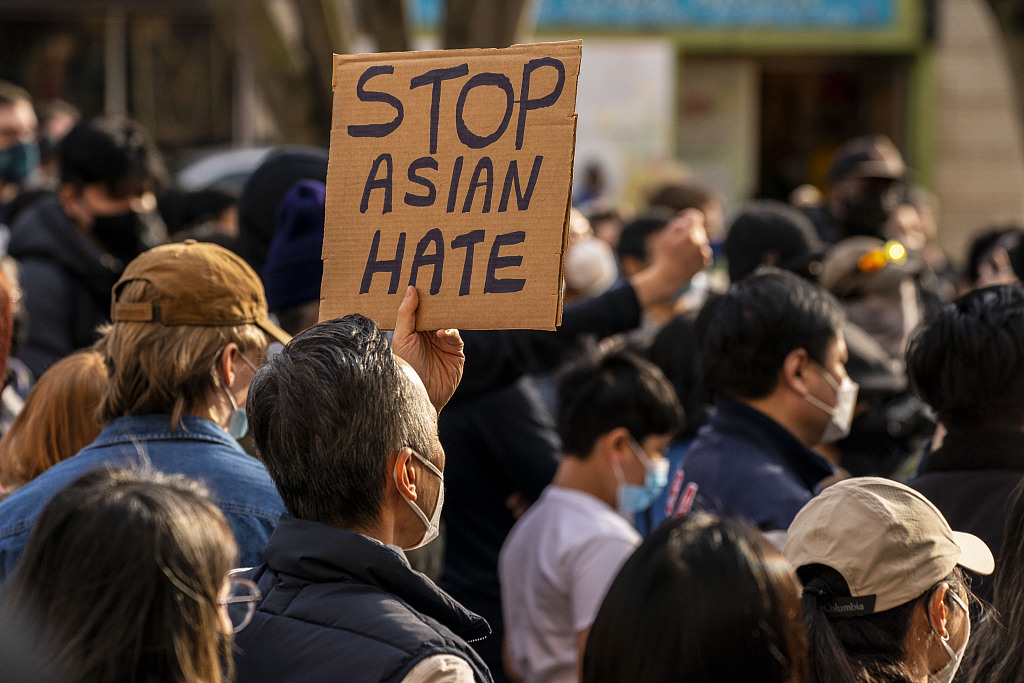April 8th Title: To eradicate the “persistent disease” of racial discrimination, we must “know it” and “change it”
Author Majia
Recently, the cover of the latest issue of The New Yorker attracted attention. In this picture entitled “Late”, an Asian mother holding her daughter’s hand waiting for the train at the subway station, eagerly looking forward to the subway, looking cautiously at other places, while her daughter standing beside her grasped her mother’s hand and was alert to the movements on the other side. The tense look of the mother and daughter reveals their momentary concern about their own safety, and also reflects the mental state of tension and fear of the entire Asian-American community. The creator of this cover, Johnson (R. Kikuo Johnson) is an Asian-American, and this paper painting is only one of the epitome of the discrimination of Asian-Americans he has experienced.
In the past few days, violence against Asian groups in the United States has intensified. California State University’s Hate and Extremism Research Center released a study in March that the rate of hate crimes in the 16 largest cities in the United States fell by 6%, while the rate of hate crimes against Asians increased by 145%. Among them, New York, Los Angeles and Boston have the top three anti-Asian hate crimes cases.
The New York Times sorted out the attacks against Asians reported in the past year. In the past year, Asians have also been damaged in addition to insulting behaviors such as pushing, beating, kicking, spitting and even being abused. The attacks range from large coastal cities with large Asians to sparsely populated towns, from California to Florida to Wisconsin, almost everywhere in the United States. Asians attacked are of all ages, gender, and classes… Violence caused by discrimination has become a common crisis for Asians in the United States today.
The violence against Asians in the United States and the resulting human rights problems have been condemned by the international community and aroused widespread anger in Asian society.
In his speech to commemorate the International Day for the Elimination of Racial Discrimination, United Nations Secretary-General Guterres named the United States specifically, saying that behind the frequent violence against Asians in the United States is racism caused by linking COVID-19 to Asia. When the United Nations Human Rights Council considered the country human rights report of the United States this year, more than 110 countries criticized the human rights issues of the United States, demanding that the United States effectively solve its own systemic problems such as racial discrimination.
On the 4th of this month, the Asian Rights Alliance organized a rally and demonstration in New York City. About 30,000 Asians took to the streets to protest against the recent frequent racial discrimination against Asians in the United States. In addition, demonstrations against discrimination against Asians were also held in Toronto, Vancouver, Ottawa and other Canadian cities, as well as Berlin, Germany, to express condemnation and anti-racial discrimination.
If the problem of racial discrimination in the United States is caused by a long-standing “innate” disease, the sudden increase in this round of violence against Asians cannot ignore the factor of “man-made disasters”. The study shows that the first wave of hate crimes against Asians peaked in March and April last year, and the increase in confirmed cases of COVID-19 in the United States was positively correlated with “negative stereotypes” of Asians. In fact, since the outbreak of the novel coronavirus epidemic, the U.S. government has furiously blamed in order to cover up its ineffective fight against the epidemic. Some political forces and the media have maliciously hyped up, linking the virus with specific races, which has fueled the hatred of Asians in American society. In addition, the active ideology of “white supremacy” and political polarization in the United States have also exacerbated this trend. Reuters, The New York Times and other media have criticized that former U.S. President Trump’s stigmatization of “Chinese virus” during the epidemic has contributed to anti-Asian sentiment. Admittedly, some politicians “blame the blame” the Asian community for political purposes, using their voice to irresponsibly spread hatred, resulting in the rise of racial hatred against Asians.
Since the Biden administration came to power, Asian discrimination and the violence caused have been condemned by the mainstream American society. Since taking office, Biden has made a clear statement on many occasions, such as national television speeches and Lunar New Year’s greetings, condemning discrimination, exclusion and violence against people of Asia-Pacific Americans. He signed a memorandum in his first week in office condemning racial discrimination and xenophobia among Asian and Pacific Americans in the coronavirus epidemic. Building on the memo, the Biden administration also announced that it would add and strengthen functions from the White House, the Department of Justice and the Department of Health and Human Services to address hate crimes and racial discrimination against Asians.
Despite Biden’s repeated anti-racial discrimination, Biden directly condemned “systemic racism and white supremacy” in the United States as “ugly poisons” last month and vowed to amend the laws that allowed discrimination to exist. However, in the face of deep-rooted racism, admitting “wrong” is only the first step. For the United States, it is necessary to have the courage to face the problem directly, but also the determination to solve it, know and change it. The U.S. government should truly fulfill its commitment to severely combat discrimination and hateful violence against minorities, including Asian-Americans, and effectively guarantee the legitimate rights of minorities, so that minorities can no longer live in violence and fear.



